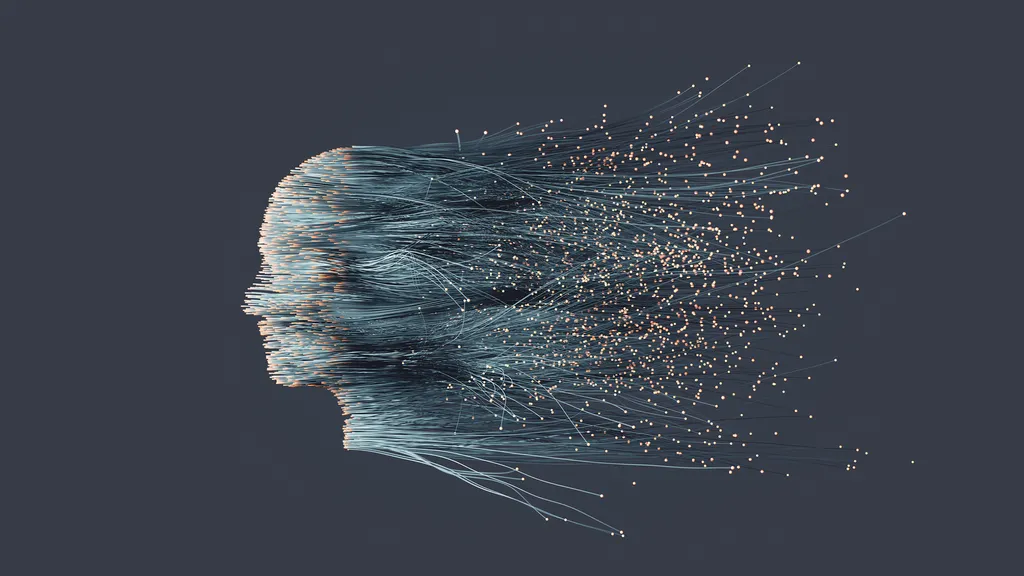Which Computational Universe Do We Live In?

Unfortunately, we don’t know whether secure cryptography truly exists. Over
millennia, people have created ciphers that seemed unbreakable right until they
were broken. Today, our internet transactions and state secrets are guarded by
encryption methods that seem secure but could conceivably fail at any moment. To
create a truly secure (and permanent) encryption method, we need a computational
problem that’s hard enough to create a provably insurmountable barrier for
adversaries. We know of many computational problems that seem hard, but maybe we
just haven’t been clever enough to solve them. Or maybe some of them are hard,
but their hardness isn’t of a kind that lends itself to secure encryption.
Fundamentally, cryptographers wonder: Is there enough hardness in the universe
to make cryptography possible? ... Most cryptographers, Ishai said, believe that
at least some cryptography does exist, so we likely live in Cryptomania or
Minicrypt. But they don’t expect a proof of this anytime soon. Such a proof
would require ruling out the other three worlds — and ruling out Algorithmica
alone already requires solving the “P versus NP” problem, which computer
scientists have struggled with for decades.
The AI in a jar

Chomsky sparked a reorientation of psychology toward the brain dubbed the
cognitive revolution. The revolution produced modern cognitive science, and
functionalism became the new dominant theory of the mind. Functionalism views
intelligence (i.e., mental phenomenon) as the brain’s functional organization
where individuated functions like language and vision are understood by their
causal roles. Unlike behaviorism, functionalism focuses on what the brain does
and where brain function happens. However, functionalism is not interested in
how something works or if it is made of the same material. It doesn’t care if
the thing that thinks is a brain or if that brain has a body. If it functions
like intelligence, it is intelligent like anything that tells time is a clock.
It doesn’t matter what the clock is made of as long as it keeps time. ...
Unfortunately, functions do not think. They are aspects of thought. The issue
with functionalism—aside from the reductionism that results from treating
thinking as a collection of functions (and humans as brains)—is that it ignores
thinking.
Microsoft’s Newest AI technology, “PeopleLens,” is Helping Blind People See

PeopleLens was developed over two years by a team of Microsoft engineers and
computer scientists. The aim was to create a machine learning system to help
blind people navigate their social surroundings by identifying people and
objects in photos. The team used a dataset of images annotated with labels
indicating the presence of people and objects. They then used deep learning
algorithms to train a computer vision model that could identify these labels
in new images. ... The system uses computer vision algorithms to help the
blind person understand their social surroundings. PeopleLens firstly
identifies people in a scene and then provides information about them, such as
their name and position. The PeopleLens platform consists of a wearable device
and a cloud-based service. The device captures images of the surrounding
environment and sends them to the cloud-based service, where they are
processed by the machine learning algorithms. This information is then used to
generate descriptions of the surrounding environment sent back to the wearable
device.
Sustaining Fast Flow with Socio-Technical Thinking
If we shape the domain boundaries right, groups of related business concepts
that change together will belong together and there will be fewer social and
technical dependencies. Shaping good domain boundaries isn’t always a trivial
task. When you stay high-level, you can easily fool yourself into thinking
something is a sensible domain like the “customer domain” (this is usually
something which connects to everything about the customer and results in a
very tightly coupled system). I recommend using techniques like Event Storming
and Value Stream Mapping to really get into the details of how your business
works before attempting to define domain boundaries. Event Storming is a
technique where you map out user journeys and business processes using
sticky-notes. There aren’t too many rules, it’s a lo-fi technique which
increases participation due to a very small learning curve. There is one rule
though: processes are mapped out using domain events which represent something
happening in the domain and are phrased in past tense, for example, ETA
Calculated, Order Placed, Claim Rejected, and so on.
How to minimize new technical debt

John Kodumal, CTO and cofounder of LaunchDarkly, says, “Technical debt is
inevitable in software development, but you can combat it by being proactive:
establishing policy, convention, and processes to amortize the cost of reducing
debt over time. This is much healthier than stopping other work and trying to
dig out from a mountain of debt.” Kodumal recommends several practices, such as
“establishing an update policy and cadence for third-party dependencies, using
workflows and automation to manage the life cycle of feature flags, and
establishing service-level objectives.” ... “The first and most important is
proper planning and estimating. The second is to standardize procedures that
limit time spent organizing and [allow] more time executing.” Most development
teams want more time to plan, but it may not be obvious to product owners,
development managers, or executives how planning helps reduce and minimize
technical debt. When developers have time to plan, they often discuss
architecture and implementation, and the discussions tend to get into technical
details. Product owners and business stakeholders may not understand or be
interested in these technical discussions.
12 examples of artificial intelligence in everyday life

Today, many larger banks give you the option of depositing checks through your
smartphone. Instead of actually walking to a bank, you can do it with just a
couple of taps. Besides the obvious safeguards when it comes to accessing your
bank account through your phone, a check also requires your signature. Now
banks use AIs and machine learning software to read your handwriting, compare
it with the signature you gave to the bank before, and safely use it to
approve a check. In general, machine learning and AI tech speeds up most
operations done by software in a bank. This all leads to the more efficient
execution of tasks, decreasing wait times and cost. ... And while we are on
the subject of banking, let's talk about fraud for a little bit. A bank
processes a huge amount of transactions every day. Tracking all of that,
analyzing, it's impossible for a regular human being. Furthermore, how
fraudulent transactions look changes from day to day. With AI and machine
learning algorithms, you can have thousands of transactions analyzed in a
second. Furthermore, you can also have them learn, figure out what problematic
transactions can look like, and prepare themselves for future issues.
Is The Modern Data Warehouse Broken?

The first problem is the disconnect, really chasm, it creates between the data
consumer (analysts/data scientists) and the data engineer. A project manager
and a data engineer will build pipelines upstream from the analyst, who will
be tasked with answering certain business questions from internal
stakeholders. Inevitably, the analyst will discover that data will not answer
all of their questions and that the program manager and data engineer have
moved on. The second challenge arises when the analyst’s response is to go
directly into the warehouse and write a brittle 600 line SQL query to get
their answer. Or, a data scientist might find the only way they can build
their model is to extract data from production tables which operate as the
implementation details of services. The data in production tables are not
intended for analytics or machine learning. In fact, service engineers often
explicitly state NOT to take critical dependencies on this data considering it
could change at any time. However, our data scientist needs to do their job so
they do it anyway and when the table is modified everything breaks
downstream.
An open invitation for women to join the Web3 movement

It’s important to understand some of the reasons why crypto has received the
“boys club” reputation so we can smash it. At its core, I believe that because
crypto was billed as a risky investment at the start. Women, who are naturally
more risk averse, shielded away from the initial wave. Today, the gap between
men and women in crypto aligns with the legacy of traditional investment
verticals skewing toward men. ... In order for the movement to grow and gain
legitimacy, we need everyone involved. I’d like to challenge men involved in
Web3 to think of a woman they can invite to their next meeting. And, I’d like
to challenge women to ask questions and see this opportunity as a way to align
their wealth with men. This is a moment in which you can change the course of
female wealth not just today, but well into the future. There are many women
now joining the movement inviting others in, as well. It’s starting. And, I’m
so pleased to be at the forefront of the shift. Web3 is making its debut in
traditionally female venues now. Look no further than Shopify, the online
sales platform, which reports 52% of its customers are women, is creating a
marketplace for NFT sales.
It’s not enough for CEOs to empathize with employees

CEOs who live up to Doctorow’s caricature by shutting down their emotions and
coldly making decisions that harm people also incur a personal cost. Hougaard
adds: “You turn into someone who you probably won’t like.” Often, empathy is
touted as the antidote to mean business. But Hougaard thinks that an approach
to leadership based solely on empathy has its own adverse side effects.
“Leaders can literally take on the suffering of the people that they are
inflicting suffering on and experience empathy burnout,” he explained. “Many
CEOs tell me that they make multibillion-dollar decisions and sleep fine at
night. But when they have to give tough feedback to employees or restructure
the workforce, they don’t sleep for weeks.” They’re missing sleep because they
don’t realize that empathy is only the first step in dealing with emotionally
fraught people issues. “The mantra here is: connect with empathy but lead with
compassion,” said Hougaard. “Empathy is nice for people, because they’re not
alone anymore, but it’s not really helping them to get out of their suffering.
Compassion is an intention. ...”
Is your middle management freezing progress? 4 ways to empower change

It is important to demystify what organizational culture means and how it
impacts business outcomes, customer success, and employee satisfaction. It
doesn’t have to be a top-down narrative that’s adopted universally: culture
can be created at a team level. Managers have a huge influence on the
subculture of their part of the organization. Managers can proactively opt to
create a positive organizational culture. Adopting an open leadership mindset
combined with open management practices evidently impacts key outcomes like
customer satisfaction, employee engagement, innovation, and profitability. For
an employee, the organization begins with their manager. Managers need to ask
“What is the experience I am creating for my team?” Ask basic questions like
“when do we want to meet?” and “how do we want to organize ourselves?” If
there are bigger decisions to be made, consider how teams could be involved.
Now, more than ever, employees are looking for empathy from their executives,
to be consulted on their future, not just to have a meaningful say in the
decisions that affect them, but what’s being decided on in the first place.
Quote for the day:
"Open Leadership: the act of engaging
others to influence and execute a coordinated and harmonious conclusion." --
Dan Pontefract
No comments:
Post a Comment